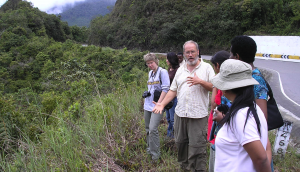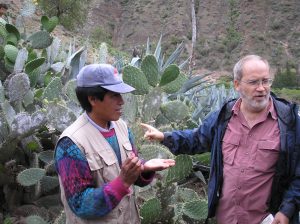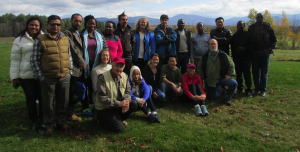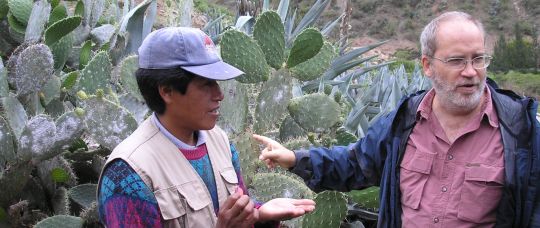By Dan Robison

The last ten days appear to have shaken the world in general. News junkies will have been aware of COVID-19 since the beginning of the year. I made some long flights to and from in the US in late January, and I wore a face mask, even though only a couple of cases had been diagnosed in the US and none in Latin America. I was not the only one, perhaps 1 in 20 were doing it. However, the announcement of the World Health Organization on March 11 that there was an official pandemic coincided with the beginning of the drop in the stock markets worldwide. These came only a day or two after the first two positive cases were identified here in Bolivia. Bolivia announced the grounding of flights from Europe, with the last one arriving Friday the 13th in the morning.
I think that many around the world realized that “IT” had arrived. The transitional president of Bolivia announced sweeping measures that came into place on Monday, the 16th of March. With less than 10 confirmed cases nationally and no related deaths, an 18:00 to 05:00 curfew came into being. The workday was shortened from 08:00 to 13:00 and intercity and interdepartmental land travel was prohibited, with a few flights still happening between cities. Starting at midnight on the 21st of March, we went into what will be 40 days of “total lockdown”.
The last few nights (with a muted interlude for Father´s Day), my town in the Bolivian Amazon has been far quieter than it has in the 25 years I have lived here. It is occurring to many people that it will take a long time to get back to normal, and that normal may be very different from how things were two weeks ago.

Food is going to get scarce
But it was not until the 20th of March that the following idea really hit me: Food is going to get scarce. It is going to be scarce in relative terms everywhere, and this scarcity will hit the most vulnerable soonest, longest, and hardest. We do not know how long this scarcity will last. When food is perceived to be scarce, the price goes up and the poorest become even more vulnerable.
In Bolivia’s case, the more successful the country is at “lowering the infection curve,” and we have just about the lowest curve so far, the longer the country is going to have to close borders severing our food supply chains. The country is – on paper – a net food exporter due to relatively extensive soya production on the southern edge of the Amazon. However, the food that most of the people eat on a daily basis has come increasingly from Peru, Chile, Brazil, and Argentina, in that order. Simply put, over the last 14 years it has become much cheaper to import foods, even our historical potato, than to produce them in country. All of our neighboring countries have a “sharper Covid-19 curve” than Bolivia so far. At what point will Bolivia feel it can open its borders?
If supply chains are disrupted, these hard-won improvements could quickly erode.
Today the Guardian had an article quoting a British Food Policy expert and the title was “We are in serious trouble: The other crisis – our food supply”[1]. Among the relevant and timely quotes from Tim [i]Lang was “We (Britain) have a massively fragile just-in-time-for market supply chain which could easily collapse, a depleted agriculture sector which produces around 50% of the food we actually eat, leaving us at the mercies of the international markets, and production methods which are damaging to the environment and human health.”
In this view, the increasingly broken systems of food production and supply chains around the world will really break under the strain of the Covid-19 pandemic. Whether we rebuild the old, broken system, or build a new, untested system, it is months if not years away. In the meantime, the most vulnerable people in our societies, many of whom were food insecure in the system that we had up to two weeks ago, are headed for a cliff. Though worldwide, the percentage of people suffering from different forms and degrees of malnutrition has been dropping over the last three decades; these improvements are not locked in, they are not guaranteed. If supply chains are disrupted, these hard-won improvements could quickly erode.
My objectives are not to simply add to the doomsday talk. They are instead to alert people to an issue that is not yet widely appreciated but also to urge a possible, partial solution: plant a garden.
By one estimate, 88% of the world’s population lives north of the equator. That means that for most of the world’s population NOW is when you should be starting your garden, or helping other people to expand and tend to their gardens. I believe that it is compatible with appropriate social distancing and the need for people to get fresh air and exercise. And if I am wrong, then at least you will have access to some nutritious food over the next few months.
In these days of accelerating bad news, social distancing, quarantine, pandemic, and likely severe disruption of food chains, what is needed is for everybody who can, to go cultivate your garden.

[1] https://www.theguardian.com/environment/2020/mar/22/tim-lang-interview-professor-of-food-policy-city-university-supply-chain-crisis?CMP=share_btn_fb&fbclid=IwAR2mgFeQ1eWI1RMcl-sGn_0m9B2O1T6Zmb2HW1kjI27obgg7y0vY6k578U0
Adapted from the blog written by Dr. Dan Robison on March 22, 2020. Dan is an agroecologist who lives and farms in Rurrenabaque, Bolivia, the Bolivian gateway to the Amazon and to Madidi National Park. He has been on the Future Generations University faculty since 2005 and currently teaches Monitoring & Evaluation and Sustainable Communities. For his full blog, please go to https://drobisonfarm.blogspot.com/2020/03/we-must-cultivate-our-garden_22.html



